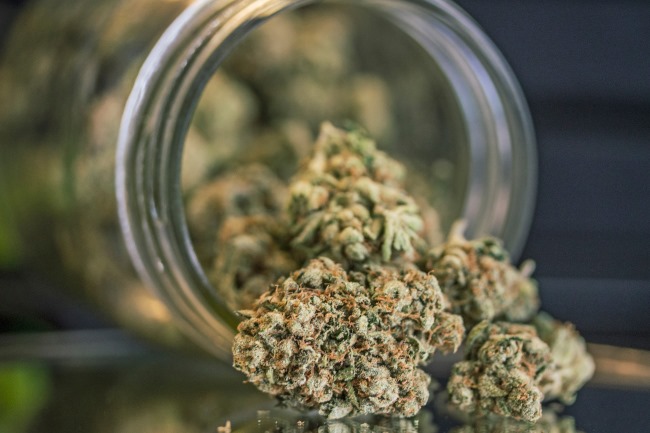
After state legalization of medical cannabis, increasing prevalence of cannabis use disorder in patients with chronic pain, especially older patients, has become a growing public health concern, according to study results published in Lancet Psychiatry.
Cannabis use disorder can result in substantial comorbidity and impaired function. Recent enactment of legislation permitting medical and recreational cannabis use has led to greater commercial availability of cannabis and the portrayal of cannabis use as normal and safe, which may decrease the perception that cannabis use poses risks. However, it is unknown whether state medical and recreational cannabis laws have played a role in increasing the prevalence of cannabis use disorder in patients with chronic pain (pain lasting 3 months or longer).
To evaluate the effect of recent exactment of medical and recreational cannabis laws on the prevalence of cannabis use disorder in adults with vs without chronic pain who were receiving care through the Veterans Health Administration (VHA), researchers in the US analyzed electronic health records (HER) data from patients with at least 1 primary care, emergency, or mental health visit to the VHA between 2005 and 2019. Data were accessed by using 15 repeated, annual, cross-sectional EHR datasets. Patients were stratified by the presence or absence of chronic pain (based on American Pain Society taxonomy and ICD-9-CM / ICD-10-CM coding to identify 11 clusters of chronic pain conditions), and those receiving palliative or hospice care were excluded.
Continue Reading
Staggered-adoption difference-in-difference analyses were used to estimate the impact of enactment of liberal medical or recreational state cannabis laws on the prevalence of diagnosed cannabis use disorder and its association with chronic pain (with each state acting as its own control) while accounting for the year that a given state’s laws were instituted. The analysis was performed by fitting a linear binomial regression model stratified by absence or presence of chronic pain with time-varying cannabis law status; fixed effects for state, categorical year, time-varying state-level sociodemographic covariates; and patient covariates that included sex, race and ethnicity, and 3 age ranges: 18 to 34 years, 35 to 64 years, and 65 to 75 years.
The analysis included data on approximately 3.25 million patients in 2005 and 4.5 million patients in 2019. Mean age of the VHA patients studied was approximately 58 years, and the majority were men. Women accounted for approximately 5% to 12% of the VHA cohort studied, depending on the year and the presence or absence of pain. Slightly more patients with pain were women, compared with patients without pain. Approximately two-thirds to three-quarters of the group were White, depending on the year; close to one-fifth were Black; and overall approximately 5% were Hispanic or Latino.
In general, the association between liberalization of cannabis law and prevalence of cannabis use disorder was significantly greater in patients with chronic pain than in those without chronic pain (P <.001 for enactment of both medical and recreational cannabis laws).
In patients with chronic pain, enactment of medical cannabis legislation was associated with an absolute increase in the prevalence of cannabis use disorder of 0.135% (95% CI, 0.118% to 0.153%). In states enacting such law, 8.4% of the total increase was attributable to the law. Enacting recreational cannabis law led to an absolute increase in the prevalence of cannabis use disorder of 0.188% (95% CI, 0.160% to 0.217%). In states enacting such law, 11.5% of the total increase was attributable to the law.
In patients without chronic pain, enacting medical and recreational cannabis law led to smaller absolute increases in the prevalence of cannabis use disorder. For medical cannabis law, this increase was 0.037% (95% CI, 0.027% to 0.048%). Nearly 6% (5.7%) of the total absolute increase was attributable to medical cannabis law, and this result was comparable for recreational cannabis law (absolute increase in prevalence of cannabis use disorder, 0.042%; 95% CI, 0.23% to 0.060%).
Study results showed that associations of medical and recreational cannabis laws with increasing prevalence of cannabis use disorder were stronger among individuals with chronic pain aged 35 to 64 years and 65 to 75 years, with particularly pronounced differences observed among patients aged 65 to 75 years.
Study limitations include the inability to generalize results observed in the Veterans Health Administration to all veterans or the general population (given that a large majority were White men 65 to 75 years of age). Additionally, the study’s observational nature precludes conclusions about causality. Other limitations include diagnosis of cannabis use disorder in the VHA population by nonspecialist clinicians, who may be more likely to overlook mild use disorder; the lack of a subjective measure of pain in the study, such as perceived pain intensity; and heterogeneity among enacted cannabis laws.
Furthermore, they wrote, “the impact of state law changes might be delayed.” Although the researchers analysed 1-year lags to include as many states as possible with laws regarding recreational use of cannabis, they advocated for analysis of longer lags and the impact of state opioid policies as newer data become available.
The investigators concluded, “Given cannabis commercialisation and widespread public beliefs about its efficacy, clinical monitoring of cannabis use and discussion of the risk of cannabis use disorder among patients with chronic pain is warranted.” They added, “When developing cannabis legislation, unintended consequences should be considered, including increased risk of cannabis use disorder in large vulnerable subgroups of the population such as patients with chronic pain.”
Disclosure: Some study authors declared affiliations with biotech, pharmaceutical, and/or device companies. Please see the original reference for a full list of authors’ disclosures.
References
Hasin DS, Wall MM, Alschuler DM, et al. Chronic pain, cannabis legalisation, and cannabis use disorder among patients in the US Veterans Health Administration system, 2005 to 2019: a repeated, cross-sectional study. Lancet Psychiatry. Published online October 11, 2023. doi:10.1016/S2215-0366(23)00268-7
This article originally appeared on Clinical Pain Advisor



